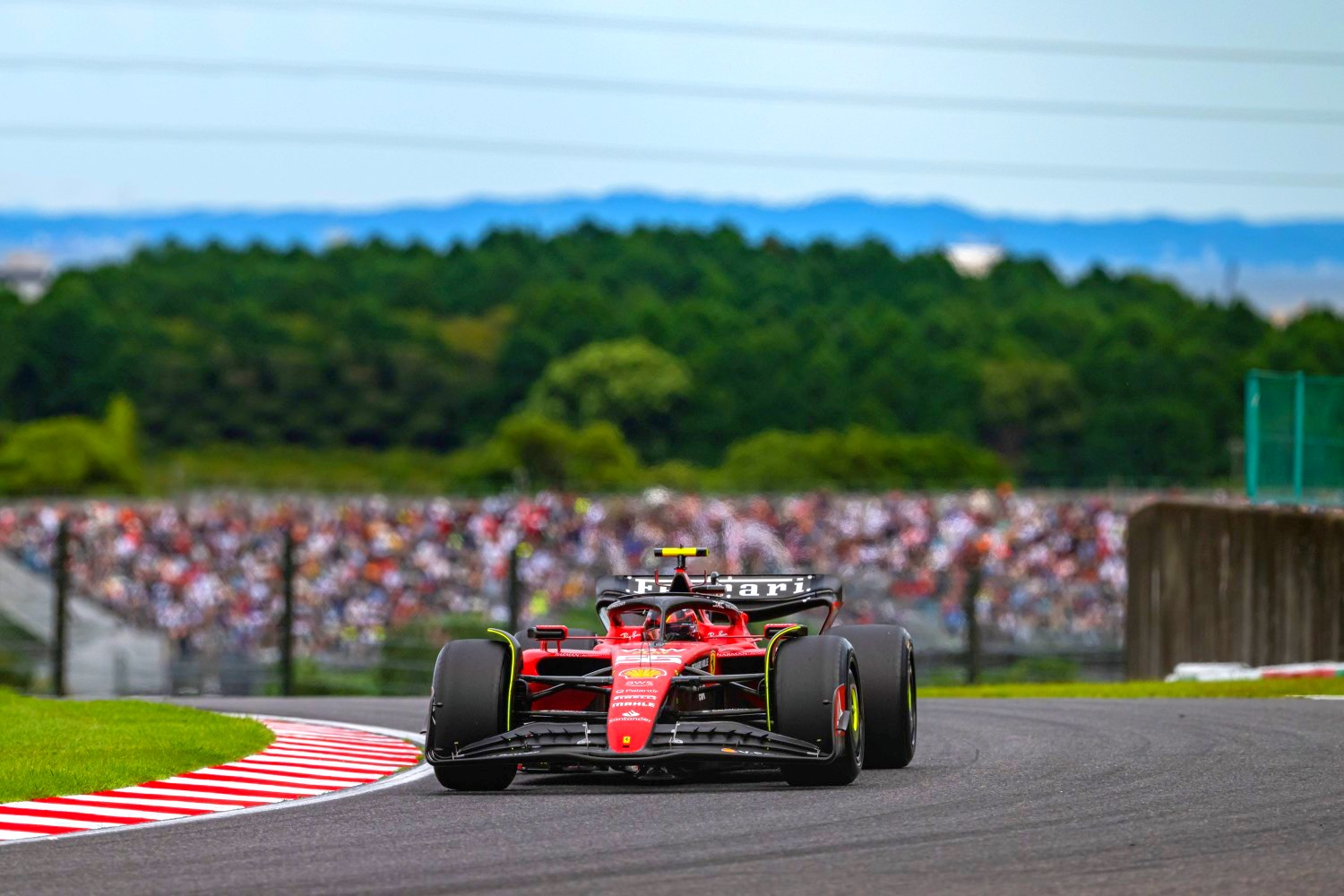Formula 1 News: 2025 Japanese GP at Suzuka Preview
We preview this weekend’s Japanese GP Formula 1 race at the historic 3.61-mile long Suzuka circuit, owned by Honda.
The Suzuka track is one of the most spectacular and demanding on the calendar, as well as being the only circuit of the season with a figure-of-eight layout. Located in the Mie Prefecture, the venue is owned by Honda whose Suzuka factory, built in 1960 is one of its main sites in Japan.
The track is regarded as being demanding for both car and driver. 3.61-miles in length, it is made up of 18 corners, some of which are part of motor racing history, such as the Esses in the first sector and the legendary 130R and it has remained pretty much unchanged over the years.
Suzuka is one of the ultimate challenges for car, driver and tires. It has almost every type of corner that we encounter over a season, all in one lap. From very high speed, to long sweeping medium speed, fast changes of direction, heavy braking and a tight chicane with curbs to ride. Pirelli will bring the hardest tires in their 2025 range for this weekend and these work well on this high-energy track. Around 50% of the track has been resurfaced since the teams last visited.
Suzuka is the only figure-of-eight circuit on the Formula 1 calendar and the track is universally acclaimed by drivers. The track carves its way through the undulating Japanese countryside, with high-speed sections and quick changes of direction, while minor errors are punished thanks to the proximity of grass, gravel and barriers.
A strong aerodynamic package is vital to contend with Suzuka’s high-speed sweeps, as is driver confidence in the car, while the circuit is also tough on tires thanks to the high-energy loads, resulting in Pirelli nominating its hardest compounds.
That also places a greater emphasis on grid position, owing to the desire for clear air, while Suzuka’s narrow nature means passing opportunities can be at a premium. Segments of the track have also undergone a resurfacing since the 2024 running of the event.
The fourth event of the season coincides with the peak of the cherry blossom – or Sakura – season, between the end of March and beginning of April. It’s also the very first time that the Japanese Grand Prix will be held at this time of year: the first Pacific Grand Prix took place at Aida on 17 April 1994, before moving to October in 1995. The early spring will also bring lower temperatures than the teams are used to in Japan, with average temperatures ranging between 8°C and 13°C.
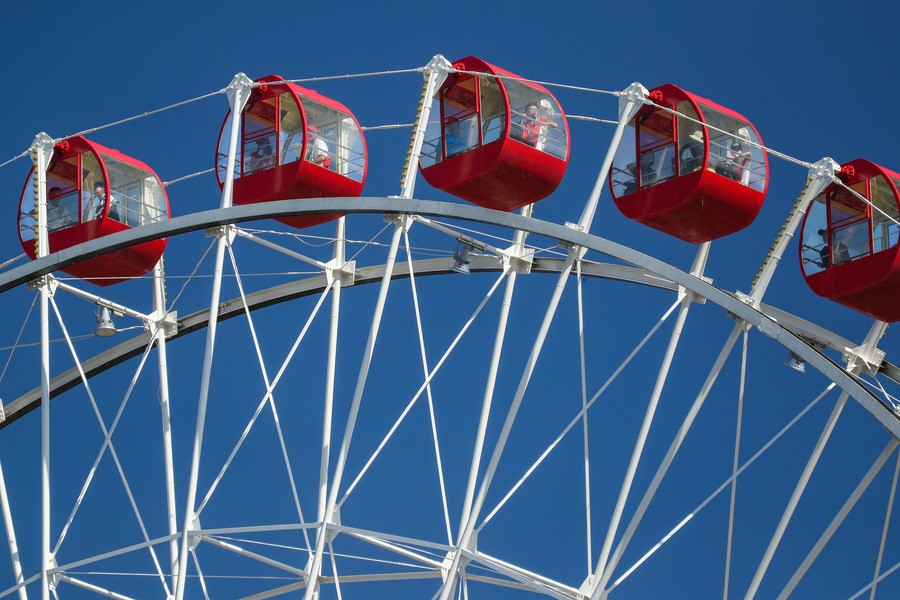
Japan initially joined Formula 1’s schedule at Fuji Speedway in 1976, a race made famous for the title showdown between James Hunt and Niki Lauda, but after its second year the country was absent for a decade. When Formula 1 eventually returned to Japan, in 1987, it did so at the demanding figure-of-eight Suzuka Circuit.
Its placement in the calendar means Suzuka has been the scene for the crowing of several world champions, some after high-profile collisions, while Max Verstappen became the latest world champion to secure a title at Suzuka, in 2022. It will be the last Suzuka race to take place in the fall for some time with the event due to shift to spring from 2024.
Speak to any Formula 1 driver, and they will immediately place Suzuka among their favorite racetracks. The drivers cascade into the high-speed right-hander at turn 1 before plunging immediately into a sequence of Esses, undulating through the scenery with rapid changes of direction. Fast corners such as Degner 1 and Degner 2, Spoon Curve and 130R require inch-perfect precision, while more technical turns including the hairpin and chicane are also deceptively tricky. The close proximity of grass, gravel and unforgiving barriers means even minor errors can be heavily punished.
Torrential rain and typhoons can even interrupt proceedings at Suzuka. On three occasions (2004, 2010, 2019) qualifying was moved to Sunday morning following the threat of a typhoon, while in 2022 the race was shortened with only 28 of 53 scheduled laps completed due to persistent heavy rainfall.
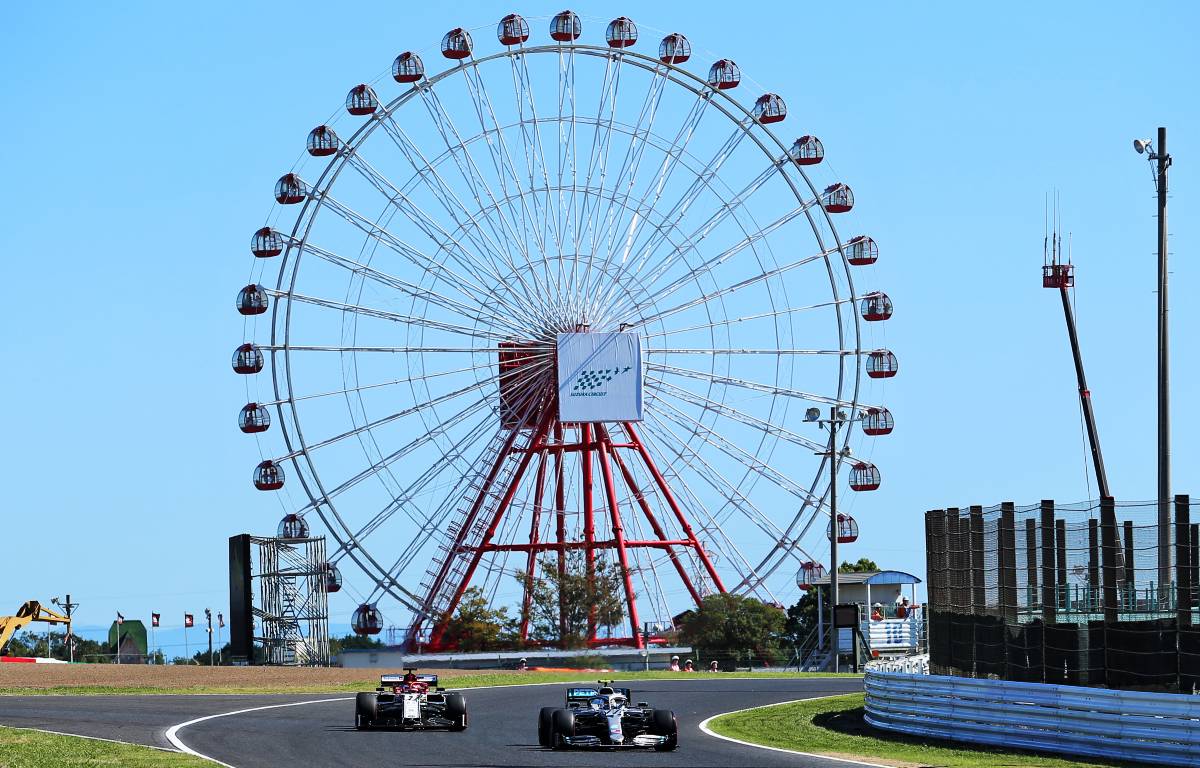
With an average speed of 153mph (240km/h), Suzuka is one of the quickest tracks on the F1 calendar.
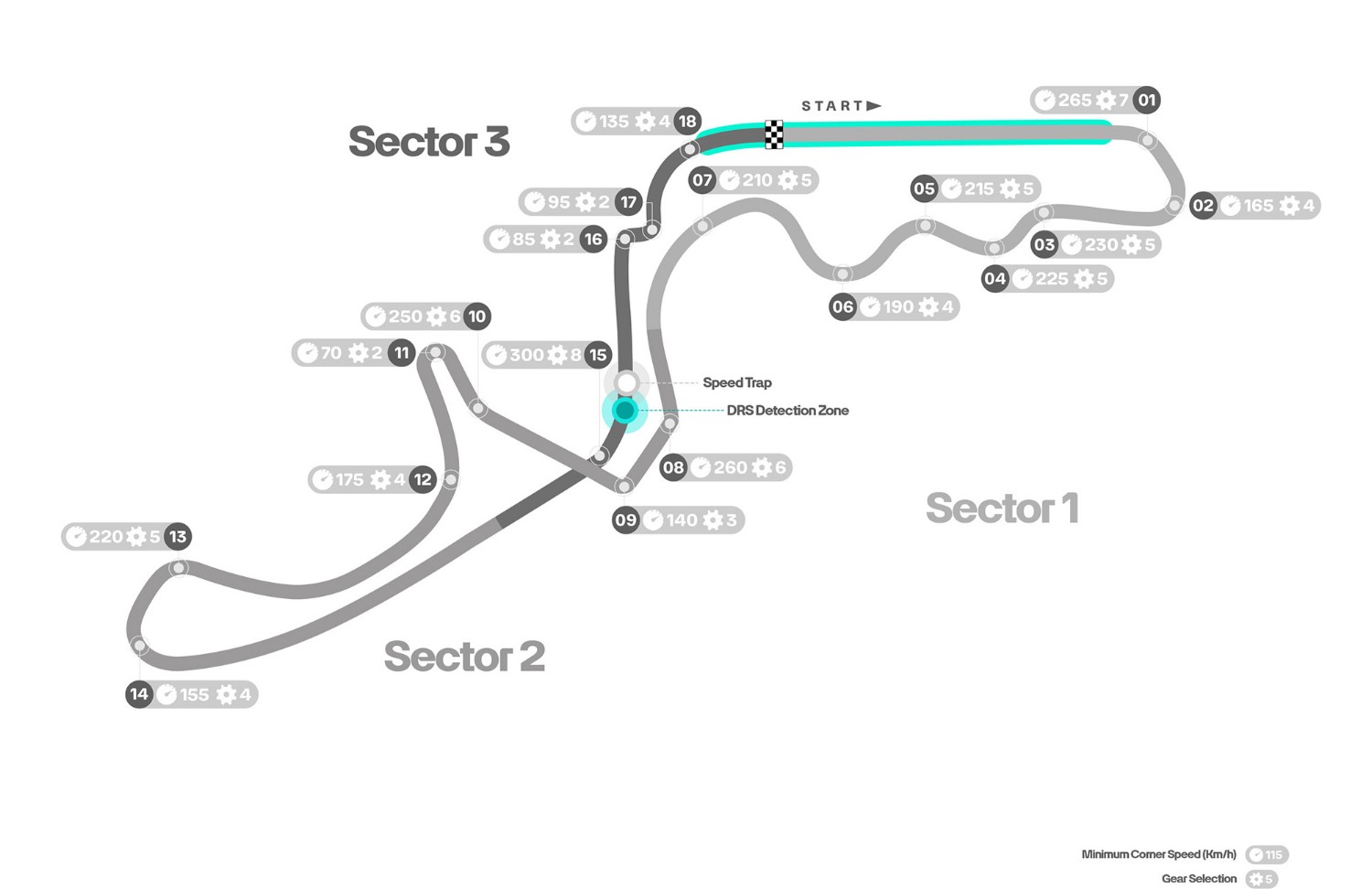
Suzuka is revered throughout the world as one of motorsport’s finest permanent circuits, with drivers barely having time to breathe through the lap, as they walk a tightrope while pushing their machines to the limit. The first sector is dominated by the Esses, a sequence of narrow sweeping medium- and high-speed corners that rise and plummet, while corners such as Spoon and 130R require total commitment.

The peril is enhanced by the proximity of the grass, gravel traps and barriers, meaning mistakes are regularly punished. Suzuka is also the only circuit on the calendar to feature a flyover, with drivers passing underneath the entry to 130R as they negotiate the exit of Degner 2.
Overtaking is not easy in Suzuka but it is possible and the racing is always good here. The drivers will need to quickly find a rhythm, especially through the Esses, but once they have that, the lap time can improve very quickly.
A little history…..
The Suzuka circuit has 18 corners, some of which – such as Spoon, 130R and the uphill combination between Turns 2 and 7 – are among the most famous on the world championship calendar. Less well-known are the two Degner corners, named after Ernest Degner, a German motorcycle racer of the 1950s and 1960s.
Born in Gleiwitz (in Poland’s Silesian Highlands) in 1931 and raised in East Germany, Degner was one of the most prominent sportsmen in Eastern Europe. He raced MZ two-stroke motorcycles designed by Walter Kaaden: a brilliant engineer who worked for the Nazis at Peenemunde during World War II: the secret weapons research facility commissioned by Adolf Hitler. Thanks to Kaaden’s creativity, the MZs were able to beat not only the established European competition but also those of their emerging rivals from Japan, who were just beginning to make their name.
In 1960, for example, Suzuki entered international competition for the first time but the Japanese bike was dramatically slow, finishing the 1960 Isle of Man TT a full 15 minutes behind the winner. It was clear that the Japanese firm urgently needed external know-how, but where to find it? The answer came in the form of a chance meeting that took place the following year between Degner and company president Shunzo Suzuki. During their conversation, Degner said he was tired of his dull life in East Germany, as the rest of the world was starting to emerge from post-war austerity: he had also had enough of the constant surveillance from the Stasi – Germany’s secret police – who followed him to every race.
The Stasi were so concerned that Degner might defect that his family weren’t allowed to come to race, so that he would always have a reason to come home. Naturally, Degner also hated the fact that most other riders – even those with far less talent – were paid much more than him, as under his home regime he had to settle for a salary equal to virtually any other MZ worker.
An agreement was quickly reached: Degner would run away, help Suzuki develop their bikes and then race for the Japanese. But he wouldn’t leave East Germany without his family and, with the Berlin Wall having just gone up, getting them out seemed almost impossible.
So during the 1961 Swedish Grand Prix weekend (which took place in Kristianstad) Degner organized his family’s escape, with the help of a friend from West Germany who made frequent business trips to East Berlin. The friend smuggled them out in a secret compartment in the boot of a Lincoln Mercury, with Degner relying on the fact that the Stasi spent more time watching him at race weekends abroad than his family at home.
He retired from the Swedish race due to engine failure and then fled to West Germany to reunite with his family before moving to Hamamatsu, where Suzuki’s headquarters were located. MZ immediately cancelled their overseas race program, just in case anyone else had the bright idea of following Degner’s example…
Degner raced for Suzuki in 1962; despite living in constant fear of being killed by the Stasi, he still managed to win the first world title in the 50cc class. But the dream turned into a nightmare the following year. At the Japanese Grand Prix in Suzuka he fell from his bike in the place now known as the Degner Curves and, when the fuel tank exploded, he suffered severe burns requiring over 50 skin grafts.
He returned to racing the following year but was dogged by other accidents before retiring for good in 1966. Living with constant pain caused him to slip into morphine addiction: his death in 1983 aged just 51 (when he was living in Tenerife) was officially down to a heart attack, but many thought it was caused by an overdose, while some people believed that the Stasi finally caught up with him.
In any case, Turns 8 and 9 of the Suzuka track are now named after him as a tribute to his contribution to Japanese motorcycling history.
Last Year’s 2024 Japanese GP
In front of a record sun-drenched crowd at Suzuka, Max Verstappen beat Red Bull teammate Sergio Perez to win the 2024 Japanese GP Formula 1 race.
The win at Suzuka was the defending World Champion’s third straight Japanese GP victory, and his 57th career F1 win.
He has now won 3 of the first 4 races of the 2024 season and all four pole positions as the talented Dutchman continues to reign supreme over his fellow competitors.
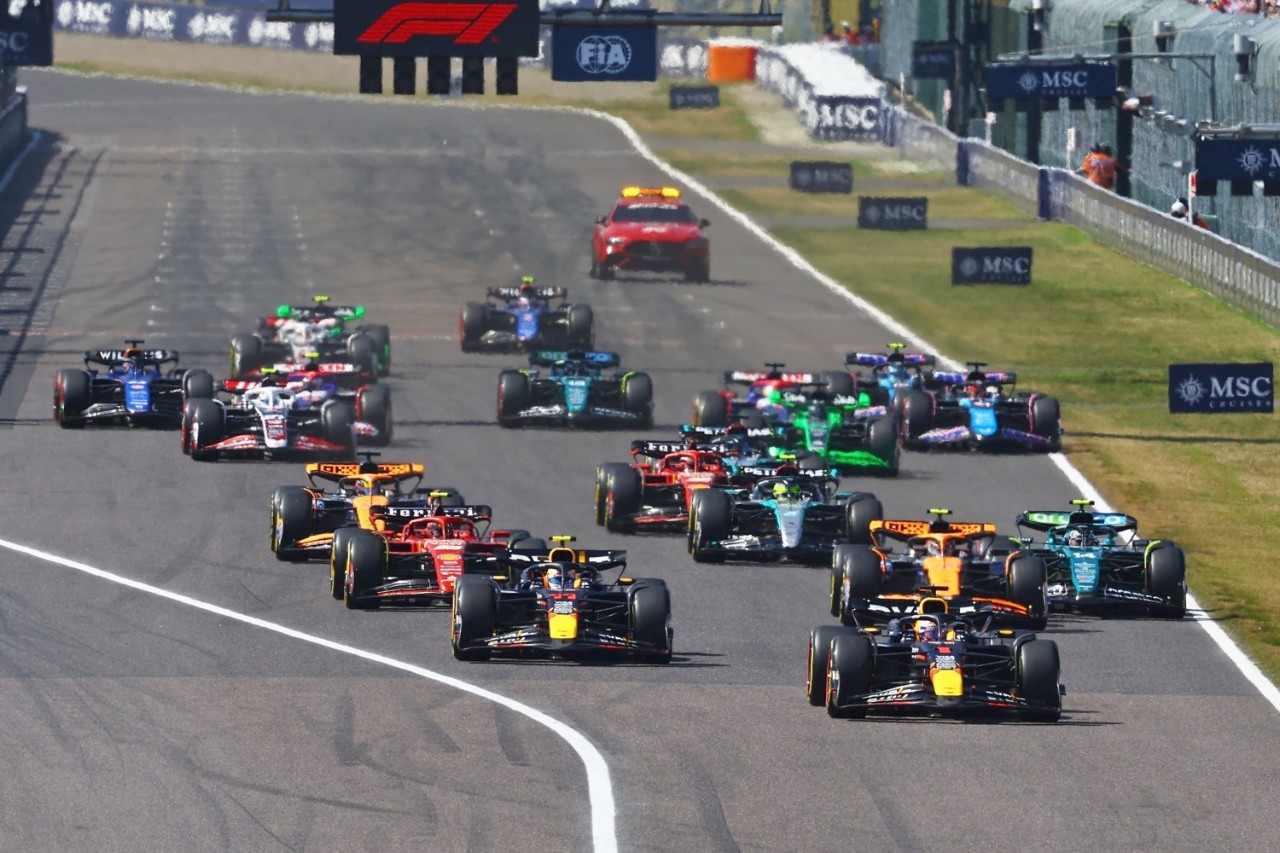
“It was very nice,” said Verstappen. “I think the critical bit was of course the start, to stay ahead, and after that, the car got better and better for me throughout the race. I don’t know if it had to do with the clouds coming in, but yeah, [it was] very nice.
“Everything just went really well, the pit stops went well, the strategy I think worked out well, so it couldn’t have been any better.”
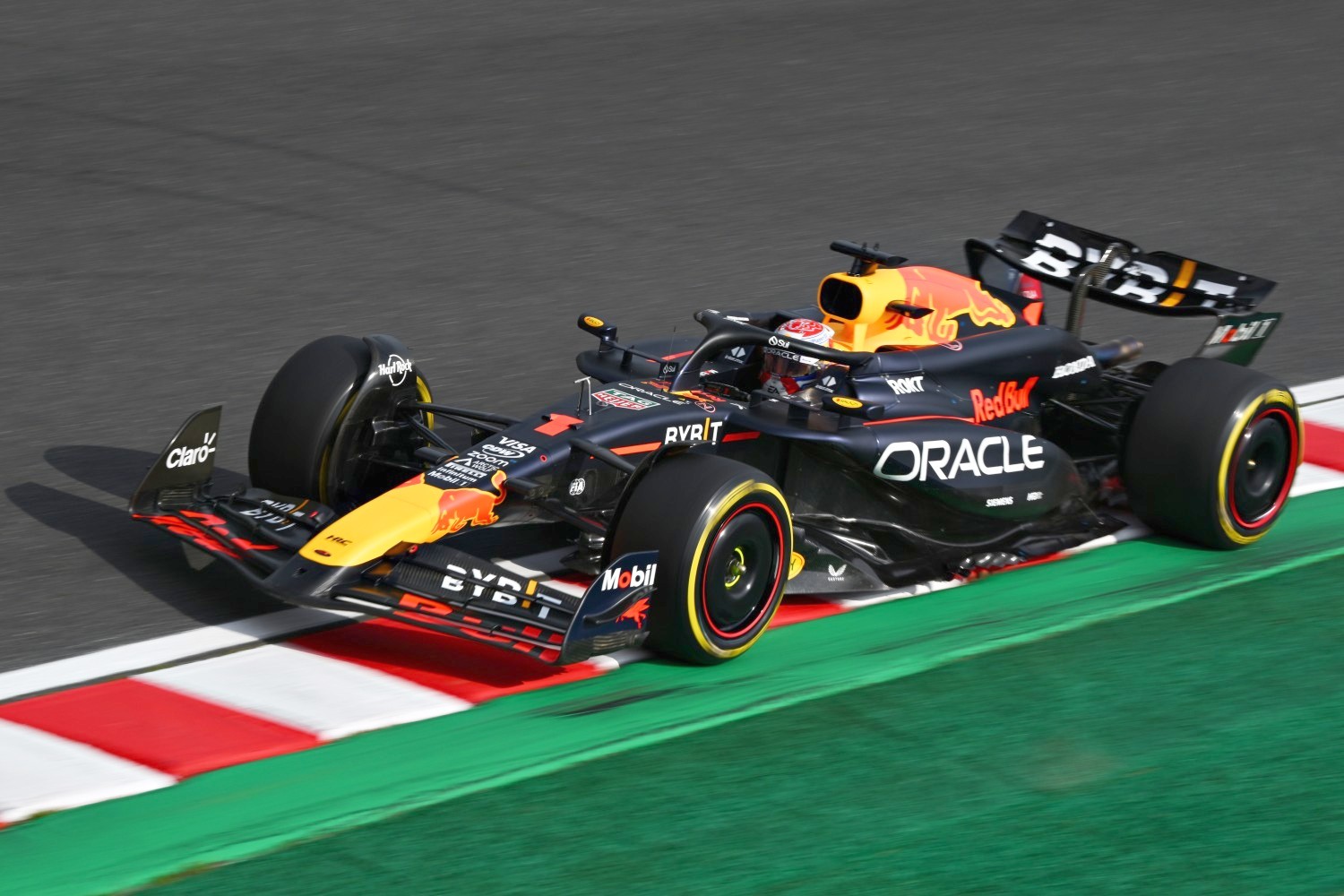
“It was a little hiccup of course, the last race, but [I’m] very happy that we are here back on the top. Great fans, in front of [Red Bull engine provider] Honda as well, [so] it’s fantastic to win here.”
Unlocking the Lap
Revered by all drivers and one of the most spectacular places to watch a Formula One car on the limit, the opening snake through the Esses is as challenging as it is rewarding. The corners flow into each other, so learning and perfecting these entries and exits is critical to a quick time through the first sector.
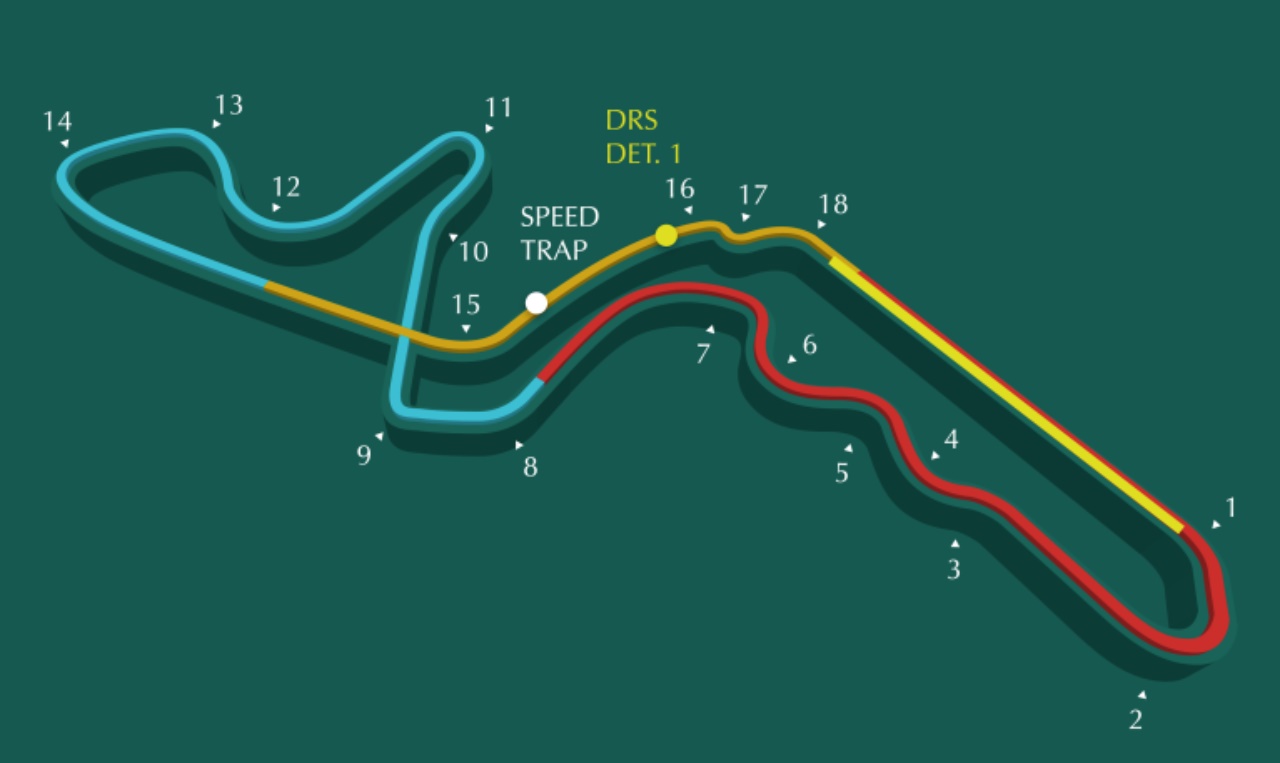
There is little rest after the Esses; the Degner section of the circuit – two very tricky right-handers – follows immediately. The first turn is fast but has a very tight exit and it is easy to run wide. The second corner arrives almost straight away – it is slightly banked, but running wide is also commonplace and can ruin a quick-lap.
The left-handed double-apex Spoon Curve precedes the longest flat-out section on the circuit and is crucial to lap-time. The first part is very fast but drivers need to resist the urge to push too soon and run out of road before the second apex. The bend leads onto a long blast up to 130R and is easy to misjudge, being slightly off-camber.
Fact File: Japanese Grand Prix
- Suzuka holds the distinction of being the only circuit we race at that is laid out in a figure-of-eight configuration.
- After the Degner Curves, the circuit passes under the straight leading to 130R. Owing to this, it’s the only F1 track that runs both clockwise and anticlockwise.
- This figure-of-eight layout is beneficial for tire wear. It creates a more even balance between left and right-hand corners (10 being right-handers and eight to the left), distributing load more equally between tires.
- The first corner doesn’t require any braking on entry. In Qualifying, drivers don’t hit the brakes until the car is cornering at close to 5G.
- That helps to generate some of the highest steering wheel torques of the entire season.
- The vast majority of the first sector at Suzuka is spent cornering. From Turn 1 until the exit of Turn 7, the steering wheel is moving almost continuously for nearly 2km of the lap.
- For 2025, parts of the track between Turn 1 until entry Turn 8 have been resurfaced.
- Just 1.2 km of the lap is spent driving in a straight line. Most of the 5.807 kms sees some lateral g-force going through the car.
- The lack of straights also means that Suzuka is just one of four circuits on the calendar that has a solitary DRS zone, between Turn 18 and Turn One.
- 130R is one of F1’s quickest corners, taken at 295 km/h. Turn 11 meanwhile is one of the slowest at 60 km/h.
- The braking zone for Turn 11 is particularly challenging. Drivers must hit the brakes midway through the fast Turn 10. They are cornering at close to 3.5G while turning right before the hairpin left. Lockups are therefore common.
- Suzuka has one of the highest mass sensitivities of the season. That means that carrying more fuel is more penalizing in terms of lap time and performance.
- Suzuka has hosted the F1 season finale on six occasions, and up until 2022 appeared in the latter stages of the F1 calendar.
- For the past two seasons, the race has taken place in April, in the middle of the famous Japanese cherry blossom season.
- Suzuka has one of the highest mass sensitivities of the season. That means that carrying more fuel is more penalizing in terms of lap time and performance.
Early Weather Forecast
The race in the Land of the Rising Sun, round 3, has never been held this early in the year, the 6th of April, although in 1994, a race in Japan was round 2, held on 17 April. However, that was the Pacific GP, held at the tight Aida circuit, now known as Okayama International.
Friday
Sunny and dry all day. Breezy with gusts up to 50kph in the afternoon, northwesterly in direction, meaning tailwind in the main straight
Saturday
Sunny in the morning. Then, a veil of high-clouds becoming thicker in the late afternoon. Dry conditions expected for both sessions (FP3 and Qualifying). Light-to-moderate southeasterly wind in the afternoon
Sunday
Showers likely in the morning. Then, becoming partly cloudy with a decreasing chance of showers from midday. Slight chance of showers for the Race
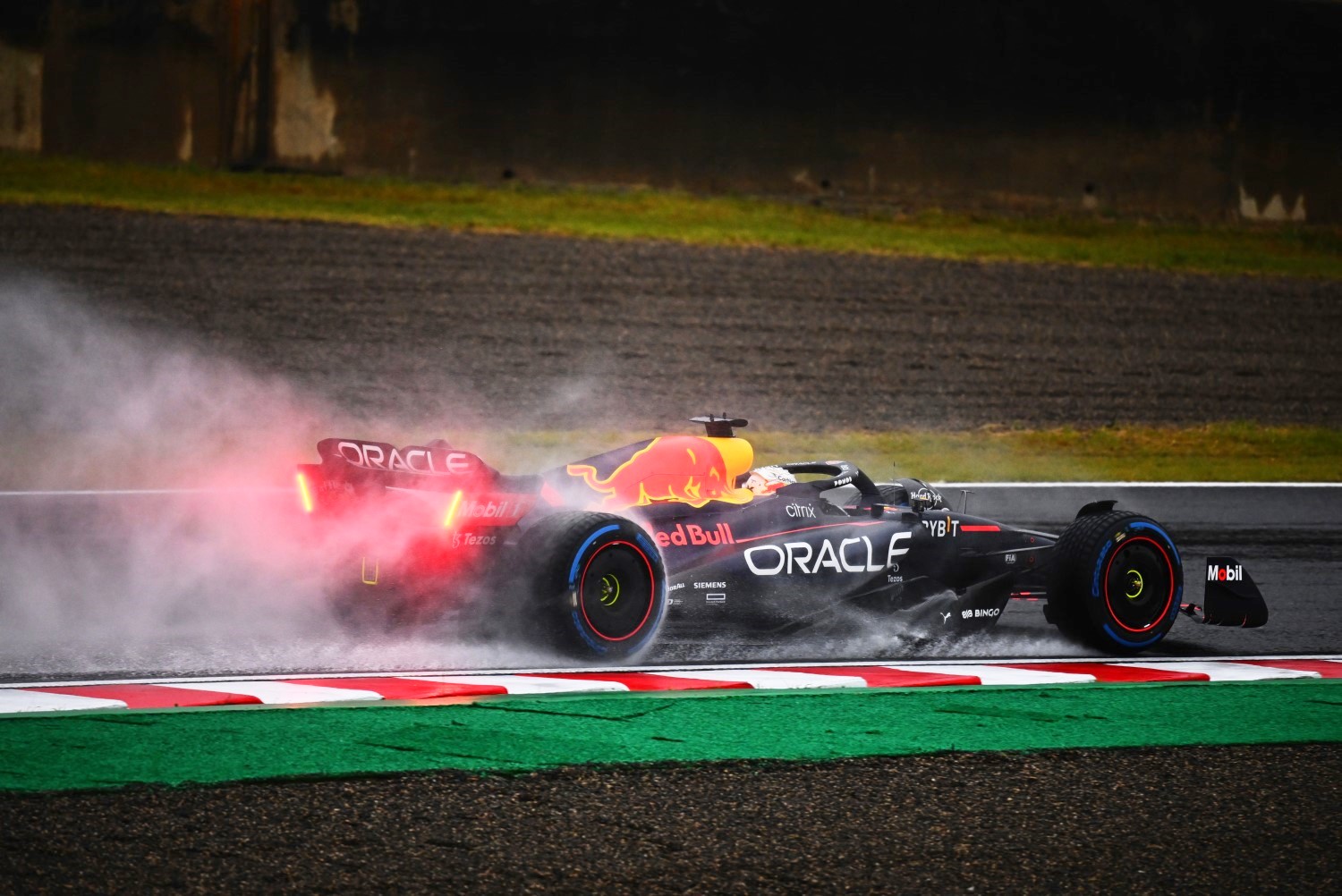
Which drivers have won the Japanese Grand Prix?
There have been 18 different winners of the Japanese Grand Prix since 1987 with Michael Schumacher being the most successful of them. Mario Andretti won the inaugural race hosted in 1976 at the Fuji circuit, while Gerhard Berger was the first victor at Suzuka.
Of the drivers currently on the gird, four have won there, including Hamilton, Valtteri Bottas, Max Verstappen and Fernando Alonso.
Hamilton (five), Verstappen (two) and Alonso (two) have all won multiple times there.
The last 12 winners of the Japanese Grand Prix:
2010 – Sebastian Vettel
2011 – Jenson Button
2012 – Sebastian Vettel
2013 – Sebastian Vettel
2014 – Lewis Hamilton
2015 – Lewis Hamilton
2016 – Nico Rosberg
2017 – Lewis Hamilton
2018 – Lewis Hamilton
2019 – Valtteri Bottas
2020 – Cancelled – Covid
2021 – Cancelled – Covid
2022 – Max Verstappen
2023 – Max Verstappen
2024 – Max Verstappen
Pirelli Tires
The C1, the hardest compound of the 2025 range, makes its season debut at this the third round, joined as usual by the C2 and the C3. That’s because Suzuka is one of the toughest tracks on the calendar when it comes to tires and Pirelli has therefore always selected the hardest trio of compounds.
It is worth noting that, of the three, the C1 is the one that most closely resembles its 2024 iteration, while the C2 especially and the C3, have undergone the most changes in terms of performance, being softer than last year. Therefore, it will be interesting to see how the teams will manage their tyre allocation over the course of the three free practice sessions as they try to establish the best-set up for their cars, with a focus on race strategy.
Pre-event simulations, carried out using data supplied by the teams, suggests that lap times will come down thanks to the combined effect of the additional grip from the new surface and the increase in performance from the 2025 cars, which is reckoned will be around the one and a half seconds mark. That figure will be checked right from Friday during the first two hours of track activity.
Also based on data from the teams, the Pirelli engineers have slightly modified the required minimum start pressures across both axles, with the front coming down by a half psi from 25 to 24.5 and the rear increasing by the same amount from 23 to 23.5.
As always, Friday’s data will be analyzed immediately, to check the correlation between the simulation and the actual figures, before making any necessary adjustments. It will be important to check if, as was the case in China for the second round, the new track surface will have a very significant effect on performance and also how quickly the track will evolve, given that Suzuka is one of the busiest circuits on the calendar, having already hosted two major events so far this year.
Something new for this year is the fact that a large part of the track has been resurfaced, from the exit of the last chicane to the end of the first sector. This is an important section, as it features medium and high-speed corners, some of them long ones, such as the first two after the start-finish straight, where tires come under a lot of stress.
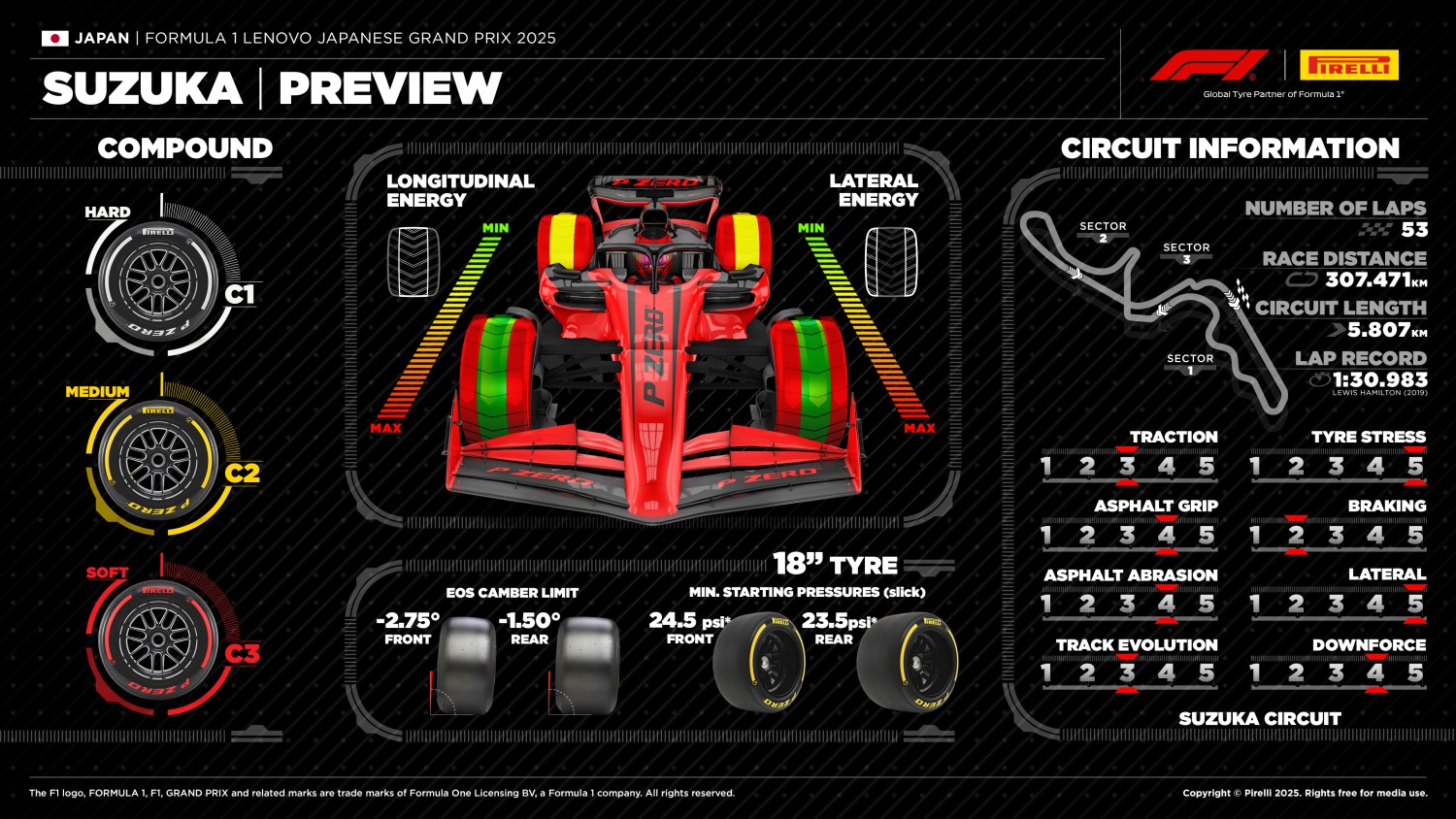
In 2024, the race was won by Max Verstappen, followed home by Red Bull team-mate Sergio Perez and the then Ferrari driver Carlos Sainz. The field was split pretty fairly evenly between the Medium and Soft for the first stint, with 12 choosing the C2 and eight the C3. But race strategy was then influenced by the race being red flagged following a collision between Albon and Ricciardo, with seven drivers changing compounds for the restart off the grid. There was quite a difference in strategy choices, both in terms of the number of stops, with the two-stopper nevertheless proving the most popular, and the order in which the compounds were used. In the end, the C1 did the most laps (61% of the total) ahead of the Medium (31%) and the Soft only doing a short first or final stint, as its performance drop was quite significant.
Worth noting that, starting on the Medium and making only one change to Hard, Charles Leclerc managed to make up four places from his grid position, to finish eighth. This year with what is on paper a big performance differential between the compounds, a one-stop could prove more complicated, although one must wait and see what influence the newly surfaced part of the track might have, as well as what the temperatures will be this weekend.
